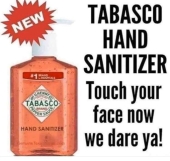
 10
10







Invasive plants are Earth's way of insisting we notice her medicines. Stephen Herrod Buhner
Everyone learns what works by learning what doesn't work. Stephen Herrod Buhner
 9
9




 11
11




I am only one, but still I am one. I cannot do everything, but still I can do something; and because I cannot do everything, I will not refuse to do something that I can do. (E.E.Hale)
 7
7




When you reach your lowest point, you are open to the greatest change.
-Avatar Aang
 8
8




 10
10




(Reminder to myself) God didn't say, "well said, well planned, and well thought out." He said, "well done."
Nikki's Wishlist
 4
4




 5
5




Rare edibles, honey bees, and wildlife habitat
www.duffymeadows.com
 15
15






Check out the Food Forest Card Game: https://permies.com/wiki/141665/Food-Forest-card-game-English
 2
2




 8
8




 8
8




 10
10




 7
7




. . . bathes in wood chips . . .
 9
9






Bull thistle root can be eaten and is best used when mixed with other vegetables. Young flower stems can be cooked and young leaves can be eaten in a salad or tossed into a sauté.


Invasive plants are Earth's way of insisting we notice her medicines. Stephen Herrod Buhner
Everyone learns what works by learning what doesn't work. Stephen Herrod Buhner
 4
4




Bless your Family,
Mike
 1
1




Bless your Family,
Mike
 3
3




 3
3




"When the whole world is running towards a cliff, he who is running in the opposite direction appears to have lost his mind." C.S. Lewis
Visit https://themaineingredient.com for organic, premium dried culinary herbs that are grown, processed, and packaged in the USA.
 2
2




 2
2








Invasive plants are Earth's way of insisting we notice her medicines. Stephen Herrod Buhner
Everyone learns what works by learning what doesn't work. Stephen Herrod Buhner
 2
2




Anne Miller wrote:Hi, James
Do you know what kind of sunflowers those are?

|
The tiny ad to rule them all
The new kickstarter is now live!
https://www.kickstarter.com/projects/paulwheaton/garden-cards
|







